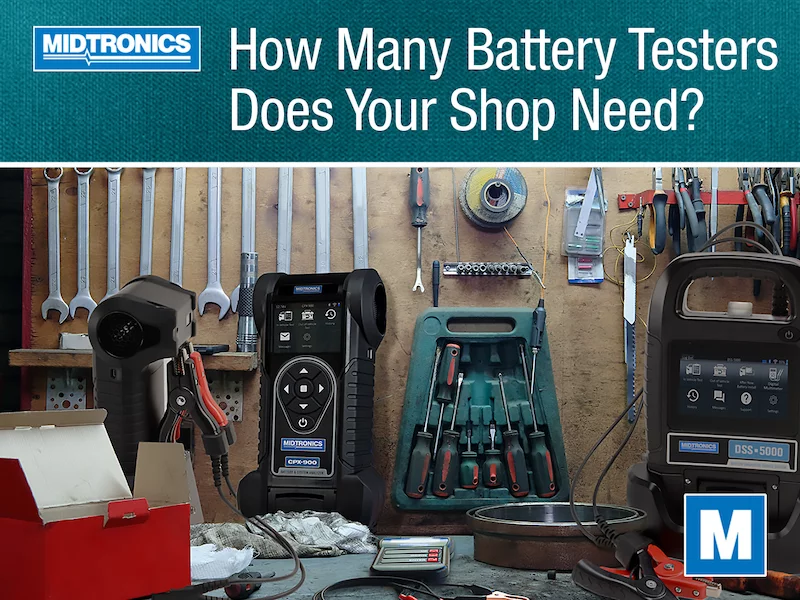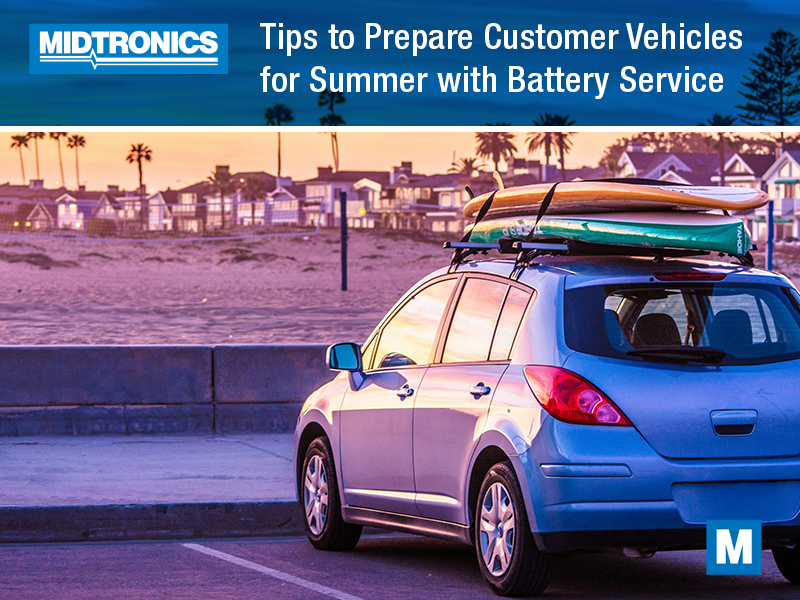The shop is bustling. The moment you open the doors in the morning, a steady stream of customers flows in, each person looking to get their vehicle fixed or maintained. It’s hectic, but on good days, it moves like a symphony conducted by a world-renowned maestro. On less than stellar days, though, a constant flow of fidgety customers and impatient techs anxiously move around the service advisors’ desks.
This controlled chaos often occurs in the worst bottlenecks: from opening until about 10am, the lunchtime rush, and toward the end of the day. These are the moments that your shop needs to be prepared to handle with the right processes, the right staffing, and the right equipment.
If your plan is to test every vehicle’s battery every time it arrives at the shop – and it should be – then you probably have felt the traffic jam due to a search for battery testers. Whether it’s your advisors, support staff, or technicians who perform the battery test, it’s during these busy times that they seem to be missing in action.
Do you have enough battery testers for your shop? If someone is always complaining that it’s too hard to find a tester, the bottleneck might be because you don’t have the right number for the size of your shop. Here are some best practices for equipping your shop properly.
How Many ‘Basic’ Battery Testers Do You Need?
A basic battery tester uses conductance technology to get a quick picture into a battery’s health. It applies a micro load to the battery for only a few seconds and creates a highly accurate snapshot of the battery’s ability to perform starting events.
These are the types of battery testers that are most common among dealerships and repair shops all over the world. The full test takes about a minute or less to perform, and it identifies problems where the cranking amperage is less than what it should be.
Along with diagnosing bad batteries, these testers are ideal for providing peace of mind to car owners. When they see the results on the tester’s screen or on the printout, they’re more confident not just that their battery is alright, but that the shop is looking after them and their vehicle extremely well.
Naturally, these testers are going to be in the highest supply throughout your shop.
- For express bays or quick lubes, there should be one ‘basic’ battery tester per lane. These lanes see the most traffic, typically one vehicle every 15 to 20 minutes when it’s busy, and there’s no time to wait for a tester.
- For the service drive and general technician bays, it’s a good plan to have one basic tester per two bays. Techs generally spend more time with vehicles in these bays, so test frequencies are at a slower rate.
- For specialized techs, you might be able to spread one tester among four technicians. Since they usually aren’t the only tech working on the vehicle, like a front end or alignment tech, or they spend hours per vehicle like a transmission tech, odds are that the demand for the tester is much lower.
How Many Diagnostic Battery Testers Should You Have?
However, your shop also needs more advanced battery testers on hand in addition to the conductance-only test equipment. Diagnostic battery testers perform more in-depth tests to determine issues related to reserve capacity or charge acceptance. These tests aren’t necessary, in most cases, unless the car owner is experiencing symptoms that center on the starting, charging, or electrical systems. They also need a power source to plug into.
These comprehensive testers are a more costly investment, of course, but they’re necessary. Do you need as many? No. Since only technicians that are performing diag-related tasks will be using them, a small or medium-sized shop – say, up to eight bays – will probably find one is enough. For shops with more than eight bays, add a diagnostic battery tester for every additional eight techs.
What Happens When You Don’t Have Sufficient Test Equipment?
If you’re short of these battery tester benchmarks, it might not seem like an issue. Remember, though, that you’re planning for the busiest times, not just average business days. What happens if there aren’t enough testers on hand during peak times?
First, you’ll notice that test printouts aren’t getting attached to your ROs, and that’s because the tests aren’t getting performed in at service check-in on every vehicle. While you might not be missing many bad batteries during a short busy spell, your customers also aren’t getting the reassurance that they’re battery is good.
Second, a flat rate technician that’s frustrated they can’t find a battery tester when they need it won’t wait. The vehicle could be put on hold and kicked out the door until later, or the multipoint inspection could be completed with N/A written in the battery condition line. Obviously, that’s not ideal, and it leaves the door open to sending a customer home with a weak or failing battery when it should’ve been caught.
Third, there’s the situation of human error. Handheld battery testers contain a rechargeable battery, but what happens when a tech or service advisor innocently forgets to put it on the charger overnight? Now you’re trying to make do with one less tester the next morning during the busiest time when you’re already stretched thin on test equipment.
Test Equipment is an Investment
Compared to an individual battery sale and the related installation cost, test equipment is expensive. But bigger picture, it’s not only about identifying and selling batteries – testing each one is also about creating an environment where customers can be confident they’re being taken care of in the best possible way on every single visit.
Over the lifespan of a battery tester, it will pay itself off many times over with the number of battery sales it leads to. But the immeasurable benefit is the customer loyalty it helps to foster.




